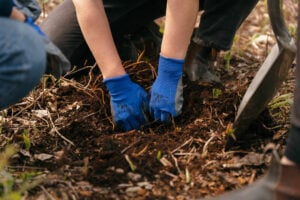Building Ivory Tusk Mound, April 25, Nairobi, Kenya, 2016
Inspired by the stickiness of gaming, AVARA Media is building an immersive augmented reality technology platform that puts people face-to-face with the biggest environmental and ecological issues our planet is facing—and shows how they can be part of the solution.
Now, instead of just looking at a rainforest landscape, you can immerse yourself in it—and even pick up a plastic water bottle floating down the river. Or travel to Indonesia, the native habitat for the endangered Sumatran tiger, and help create a digital ecosystem in which the animals do not go extinct.
The thinking is that by immersing you into the action, and gamifying the task, digital behaviour will transform into actual behaviour. Just maybe, people will think twice before buying that next plastic water bottle.
“We want to inform, impact and influence people so they ultimately become change agents towards a healthier planet,” Gupta said. “The idea around this is to inject enough game theory and gamification that there’s mass, mass appeal.”
Last year, The Royal Canadian Geographical Society and Canadian Geographic Education, with support from the RBC Foundation, partnered with The Anthropocene Project to develop an education program to expand its reach among youth and get into classrooms all across Canada. Through virtual and augmented reality, video and immersive lesson plans students can experience the history and science of different environments, and see with their own eyes the impacts of human activity, in places such as landfills. The new education program finally launched in Canada last month as part of Canadian Geographic Education’s new Online Classroom.
Technology may have made the world of photography a much more crowded space, but for Burtynsky, it’s opened up doors and worlds – and a whole new photographic art form.
Listen: Ed Burtynsky and Vikas Gupta on how “Photography 3.0” can help us experience the world in the time of COVID-19








